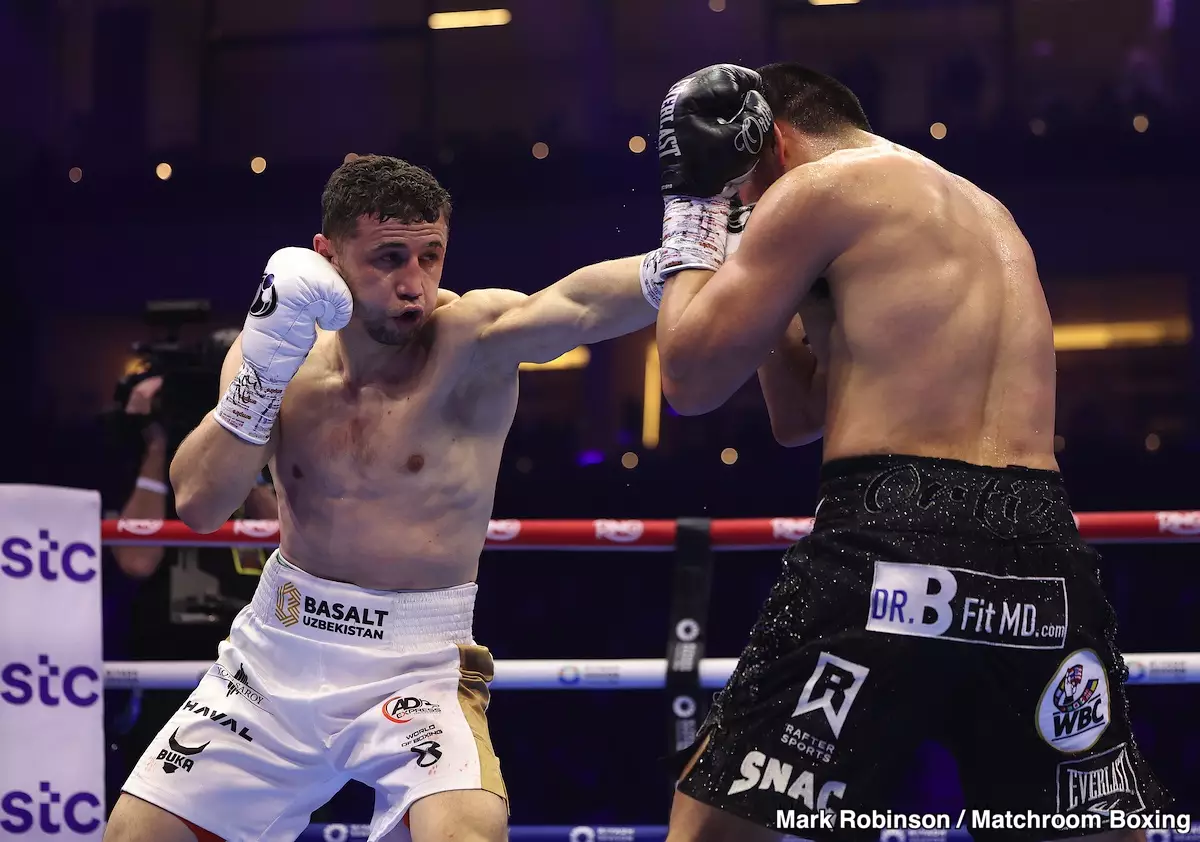On a thrilling Saturday night in Riyadh, Saudi Arabia, Vergil Ortiz Jr. faced off against Israil Madrimov in a matchup that showcased the resilience and tactical abilities of both fighters. Ortiz Jr., holding the title of WBC interim junior middleweight champion with an impressive record of 23 wins and 21 knockouts, entered the ring with high expectations. Despite his undefeated status, he found himself in a rigorous contest against Madrimov, who had a record of 10 wins, 2 losses, and 1 draw. After 12 grueling rounds, the judges awarded Ortiz Jr. a unanimous decision, with scores of 115-113, 115-113, and 117-111, although many observers believed the fight was much closer than suggested by the official results.
During the initial half of the bout, Madrimov’s strategy—characterized by agile footwork and sharp power punches—allowed him to outmaneuver and outclass Ortiz Jr. His tactics seemingly disoriented Ortiz, who struggled to find his rhythm. However, as the fight progressed, the energy levels shifted; Madrimov appeared to tire, paving the way for Ortiz Jr. to establish himself in the latter rounds. The fight’s dynamic, showcasing Ortiz Jr.’s power against Madrimov’s speed and technique, highlights critical elements of boxing strategy and the physical toll of the sport.
The scoring of the fight ignited significant debate among boxing analysts and fans alike. Many felt that Madrimov had effectively won at least five rounds, if not more, particularly due to his strong performance in the first half. The judges, however, seemed to favor Ortiz for his pressure and ability to push Madrimov back, regardless of the cleaner shots landed by his opponent. This raises a pertinent question: how do judges assess fights, and what criteria do they prioritize—pressure, effective aggression, or sheer punching power?
Oscar De La Hoya, Ortiz Jr.’s promoter, expressed his views post-fight, attempting to frame Ortiz’s performance in a favorable light. While he acknowledged some moments where Ortiz struggled, he emphasized the effectiveness of Ortiz’s body shots and his ability to wear Madrimov down. Yet, this perspective may be a product of bias; the facts reveal that Ortiz took considerable punishment early in the fight and could be deemed fortunate to leave the ring with a victory.
Critics argue that the judging in this fight mirrors past discrepancies seen in other bouts, particularly in Madrimov’s previous fight against Terence Crawford. If such patterns persist, it not only threatens the integrity of the sport but also raises concerns for fighters like Madrimov, who may feel disenfranchised by a system that does not reward their efforts adequately.
Post-fight discussions have inevitably turned toward potential matchups for Ortiz Jr., particularly with the looming specter of a fight against Terence Crawford. De La Hoya voiced optimism about the feasibility of such a matchup, especially with financial backers like Turki Alalshikh and networks such as DAZN in the mix. However, it’s also prudent to approach these discussions with caution. Crawford, coming off a major fight that likely padded his pockets, would be wary of stepping into the ring with Ortiz Jr.—a burgeoning threat in the welterweight division.
For Ortiz Jr., a matchup with Crawford could serve as a litmus test to determine just how far he’s progressed as a fighter. Yet, Crawford may seek safer lucrative options, likely avoiding bouts that present too much risk for reduced financial reward. As a result, fans are left wondering whether Ortiz Jr. will get the opportunity to challenge for titles, or whether he will remain sidelined as higher-profile fighters choose their opponents cautiously.
The Ortiz Jr. vs. Madrimov fight illustrates not only the thrilling artistry of boxing but also the complexities surrounding judging and matchups. While Ortiz Jr. celebrated victory, the fight showcased his vulnerabilities, raising questions about the fairness of outcomes influenced by subjective criteria. As the dust settles, boxing enthusiasts are left to ponder the future of these fighters—especially Ortiz Jr., whose potential may be tested against the very best. The sport continues to be defined by its unpredictability, both in and out of the ring.

